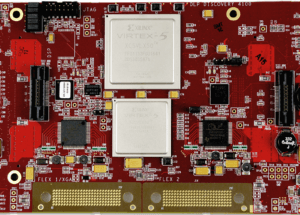Global Supply Chain Short Circuit
admin2023-10-25T19:06:53+00:00An ongoing semiconductor supply chain shortage has created various problems for digital light processing (DLP®) research due to lack of access to and supply of vital components for digital micromirror devices (DMDs), development kits, and more. In this article we take a look at the chip shortage, what global factors are causing the shortage, and what DLi does differently to meet our customers’ needs in spite of ongoing global supply chain challenges.
What is a Chip Shortage?
A chip shortage can be defined as having fewer necessary integrated circuits, or semiconductor chips, than demand in a multitude of industries calls for. These chips are necessary for completing various electronic devices such as DLP® controller boards and microelectromechanical systems (MEMS). Integrated circuits are composed of sets of electronic circuits on a small flat piece (called a chip) usually made of silicone. They carry out or facilitate electronic instructions for complex devices through the use of a series of miniature electrical switches called transistors.

There have been a number of chip production shortages throughout the years caused by various global factors. Some shortages have been side effects of trade agreements. The 1986 American-Japanese Semiconductor Trade Pact, for example, placed restrictions on the price point of chips that Japanese semiconductor manufacturers could export. These restrictions led to an overall decrease in global exports.
Other causes of chip shortages have occurred as a result of the increased demand for new technologies and services that require significantly cleaner manufacturing environments. As a result, a higher amount of dysfunctional batches are being tossed out due to manufacturing errors.
Natural disasters have also played a major role in unpredictable chip shortages. One of the most notable instances was the 2011 earthquake in Japan. Several major chip manufacturers’ facilities suffered immense physical damage, leading to a shortage of NAND memory and displays.
Whether the source is a growing market, unforeseen natural disaster, or man-made disruption, they all demonstrate that the supply chain for semiconductor chips can be fragile at times. No matter the cause, longer lead times and more competitive sourcing are becoming more common as the demand for these vital components continues to grow with each new technology.

What is Causing the Current Chip Shortage?
Unfortunately, the current global chip shortage has been ongoing for the last two years. Just as other major industries have suffered since, supply chain complications for chip manufacturers began with the onset of the global COVID-19 pandemic. South Korea and Taiwan were especially impacted by the COVID-19 pandemic, and these countries are home to some of the most prolific and productive semiconductor chip manufacturers, supplying a bulk of the world’s supply.

At the consumer level, the COVID-19 pandemic created a sharp increase in the need for products to support the widespread move to a work-from-home environment across multiple industries. It also brought about an explosion of the popularity of cryptocurrencies that required sophisticated mining rigs. When connecting the harsh impact on chip manufacturers with the growing demand for consumer electronics, the chip supply seemingly dried up almost overnight.
As the world gradually began to return to an office-based economy, the strain on chip demand began to ease. However, widespread droughts in Taiwan have depleted the supply of ultrapure water, which is needed to clean both the facilities and the chips themselves. When combining the lack of water for a major chip production company with other various global incidents like the blockage of the Suez Canal, a shortage that briefly seemed poised to begin the road to recovery has only been prolonged.
While previous market analyses by IHS Markit projected that the shortage would last through Q3 2021, as of the writing of this article the lead time for semiconductor chips has increased to 52 weeks and is expected to last for several years.
The DLi Difference
A wide variety of approaches are being made towards repairing the chip shortage, and it will require a global collaboration to efficiently alleviate the immense stress on the supply chain. Texas Instruments (TI) is one of the many organizations working to expand their manufacturing capacity to fulfill current and future semiconductor product demands.
As TI’s first DLP® Authorized Design House, DLi is putting an emphasis on finding solutions that will fit both customer needs and timelines. Our engineering team is focusing on working around those chipsets that are harder to acquire by creating new solutions alongside rethinking the design of our current solutions.
We understand that DLP®-based projects vary greatly in research, timeline, and budget needs. Because of this, we emphasize the importance of learning about your needs and work one-on-one with you to find the solution that best fits those categories. If you’re interested in learning more about how DLi can support your DLP® needs, we encourage you to reach out to a representative for quotation and lead time estimation.






